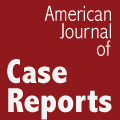GnRH Antagonist Protocol Is It an Optimal Protocol for Policytic Ovary Syndrome (PCOS) Patients Undergoing In Vitro Fertilisation (IVF)/Intracytoplasmic Sperm Injection (ICSI)?
Weijie Xing, Haiyan Lin, Yu Li, Dongzi Yang, Qingxue Zhang
Med Sci Tech 2017; 58:10-14
DOI: 10.12659/MST.903594
Available online: 2017-03-09
Published: 2017-03-09
BACKGROUND:
Polycystic ovary syndrome (PCOS) is a very common heterogeneous disorder. PCOS affects about 5–10% of reproductive-age infertile women. Several controlled ovarian hyperstimulation (COH) protocols can be used for patients with PCOS; however, the optimal stimulation protocol is still under debate. The present study aimed to determine if the GnRH antagonist protocol is an optimal protocol for patients with PCOS.
MATERIAL AND METHODS:
We retrospectively analyzed 983 IVF-ET/ICSI cycles in PCOS patients from 2012 to 2014. There were 2 groups in this study: the GnRH agonist (GnRH-a) group and the GnRH antagonist (GnRH-ant) group. The stimulation materials, IVF outcomes, and the rate of complications were compared.
RESULTS:
In the GnRH-a group, the duration of stimulation was 12.35±3.10 days and the total doses of Gn were 1882.20±814.53 IU, which were significantly more than those in the GnRH-ant group (10.52±3.26 days and 1480.04±660.74 IU, P<0.001). The rate of ovarian hyperstimulation syndrome (OHSS) in the GnRH-ant group was slightly lower than in the GnRH-a group (3.42% vs. 4.84%, P=0.406). The cycle clinical pregnancy rate and implantation rate in the GnRH-ant group were all significantly lower than in the GnRH-a group (31.59% vs. 44.68%, 48.91% vs. 63.13%, P<0.001).
CONCLUSIONS:
For patients with PCOS, the GnRH-a protocol outperformed the GnRH-ant protocol according to the cycle clinical pregnancy rate and implantation rate. However, the GnRH-ant protocol in part can lower the incidence of OHSS.
Keywords: Blood Gas Monitoring, Transcutaneous, Group IV Phospholipases A2, Receptors, LHRH



